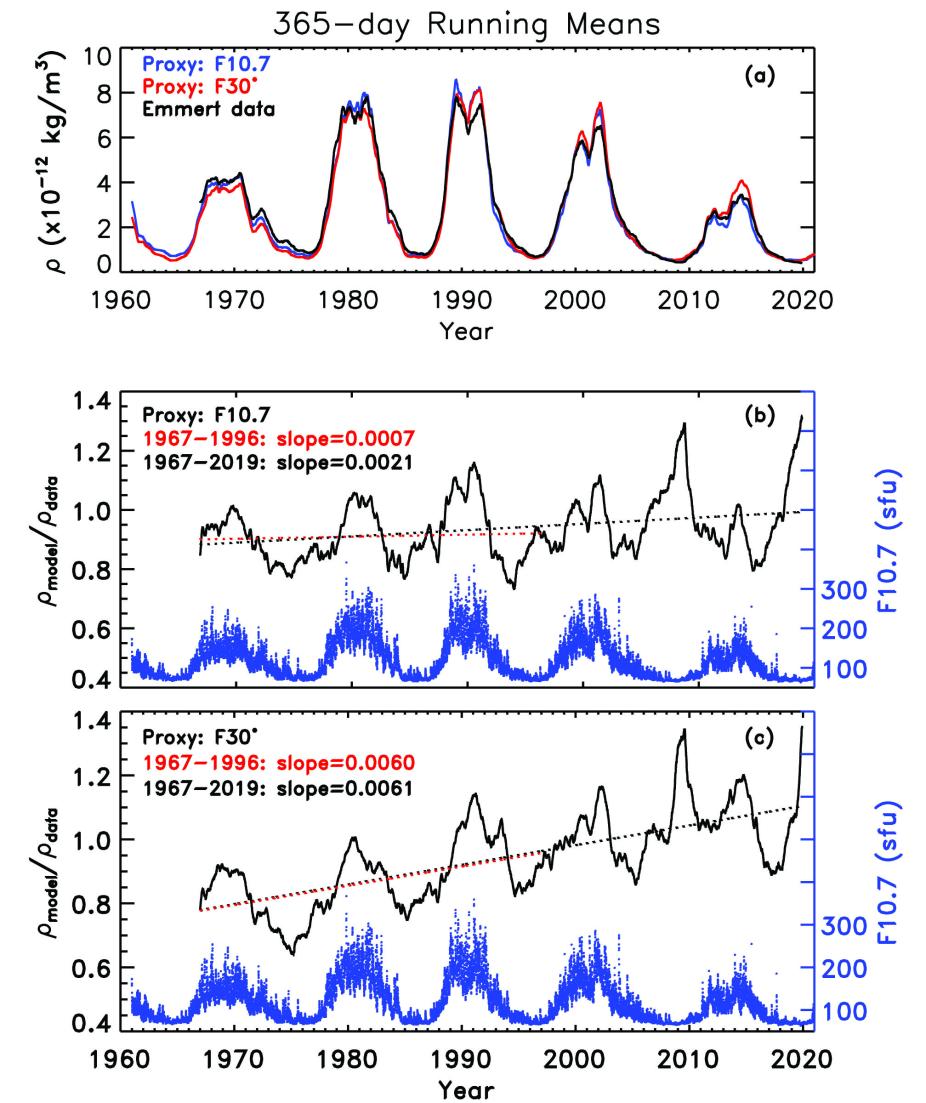Annale Geophsicae: We use model simulations and observations to examine how well the F10.7 and F30 solar radio fluxes have represented solar forcing in the thermosphere during the last 60 years of weakening solar activity. We found that increased saturation of radio fluxes during the last two extended solar minima leads to an overestimation of solar energy deposition, which manifests as a change in the linear relation between thermospheric parameters and F10.7. On the other hand, the linear relation between thermospheric parameters and F30 remains nearly the same throughout the whole studied period because of a recently found relative increase of F30 with respect to F10.7. This explains the earlier finding that F30 correlates better with several ionospheric and thermospheric parameters than F10.7 during recent decades. We note that continued evaluation is needed to see how well F10.7 and F30 will serve as solar proxies in the future when solar activity may start increasing toward the next grand maximum.

Averaged mass density at 400 km. Black: mass density derived from satellite drag data; blue: simulated mass density using F10.7 as a solar EUV proxy; red: simulated mass density using F30 as a solar EUV proxy. (b) Solid black: mass density ratio of the simulated density using F10.7 as a solar EUV proxy to the density derived from satellite drag; dotted red line: linear fit to the mass density ratio from 1967–1996; dotted black line: linear fit to the mass density ratio from 1967–2019; blue: daily F10.7 for reference. (c) Same as panel (b) but for the case with the simulated mass density using F30 as a solar EUV proxy.